Enjoy summer nature and wildlife across the UK and Ireland with our guide to what different species are up to now.
Bats (Chiroptera)
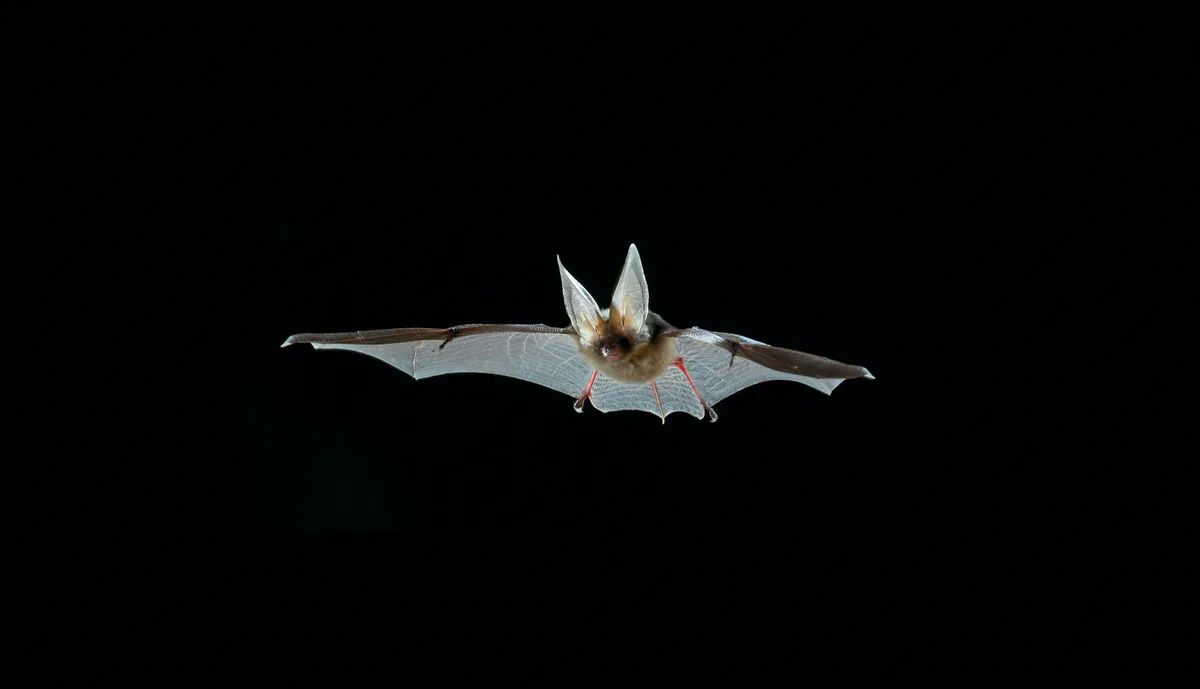
As long as there have been churches, bats have used them for their maternity colonies. The big, complex roof spaces could almost have been designed with bats in mind, thanks to their numerous exits and countless dark corners, perfect for nursing mothers and their babies to hide in.
About 6,000 of Britain’s old churches were once estimated to contain bat roosts, but a new survey being carried out by Bats in Churches aims to produce a more up-to-date figure. By involving local congregations, the study will hopefully also lead to more positive PR for bats, often maligned for the mess their droppings make.
We joke about ‘bats in the belfry’, yet in reality church towers are draughty and noisy. In summer, maternity colonies are more likely to be found in warm, southerly parts of the church roof. At least nine of the UK’s 17 breeding bat species have been recorded in churches, sometimes in mixed-species roosts, but all containing adult females (males roost elsewhere).
Common and soprano pipistrelles are the most frequent lodgers, along with Natterer’s bats, brown long-eared bats (pictured above) and serotines. However, during a trial run of the survey, an extremely rare grey long-eared bat was found in a Devon church, so there could be some surprises in store.
Common lizard (Zootoca vivipara)
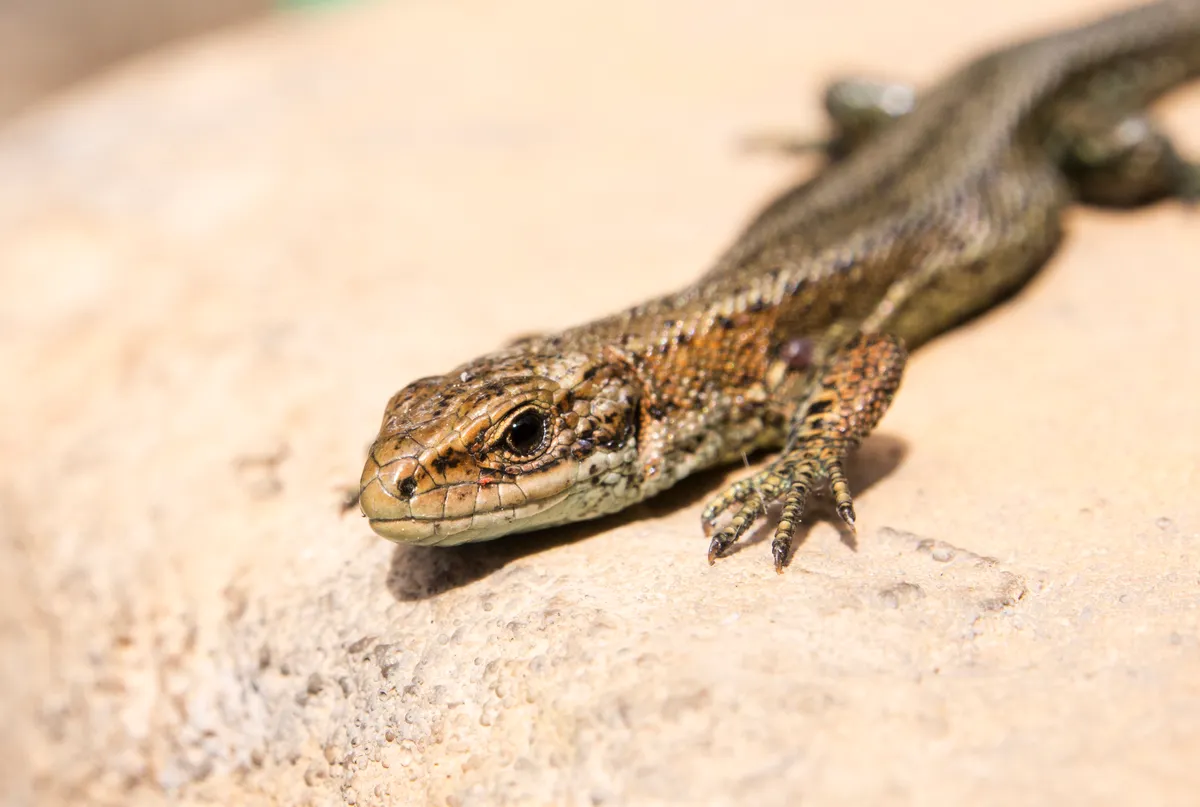
If you see a lizard in Britain, it’s likely to be this species. The four others found here (two native, two introduced) are rare, very local in distribution, shy – or all three. In fact, on the island of Ireland, there is no other reptile.
Female common lizards are currently laden with eggs, having mated in spring. They spend long periods basking on rocks, fences or open ground to warm their swollen bellies. The eggs hatch internally, and the brood of half-a-dozen little black lizards is ‘born’ this month or next.
Learn more about reptiles in the UK:
Ichneumon wasp (Ichneumonidae)
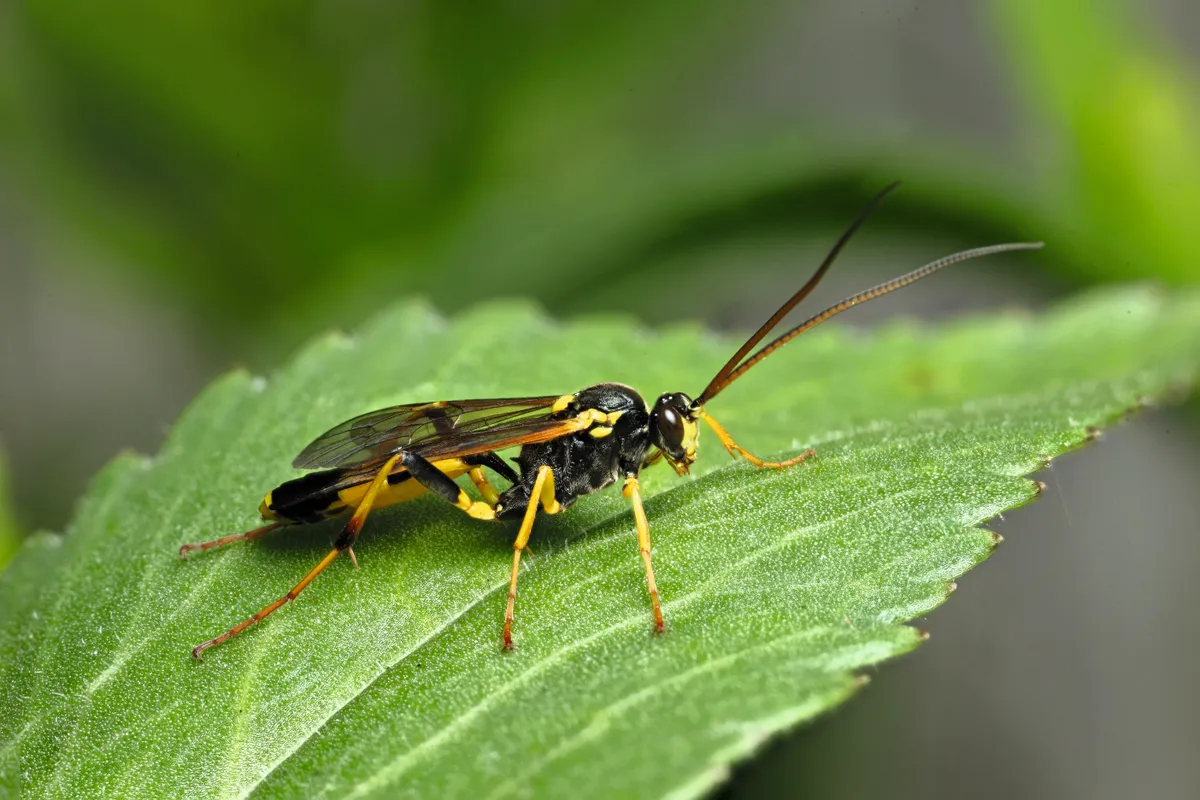
Many people find these narrow-waisted, parasitic wasps rather grisly, but ichneumons are both beautiful and numerous. There are dozens of British species, mostly found in flowery habitats where there is plenty of bare or sandy earth for the female wasps to bury their paralysed victims.
Simon Barnes comments in his book Ten Million Aliens: “The ichneumon model is no one-off example of super-evil: it’s a raging success.” Amblyteles armatorius (pictured above) is one of the most common species, frequently seen in gardens, and it catches moth caterpillars for its larvae.
The female lays her eggs in the caterpillars and when they hatch they feed on their hosts, eventually killing them before pupating. The adult ichneumons, though, feed from flowers.
Osprey (Pandion haliaetus)
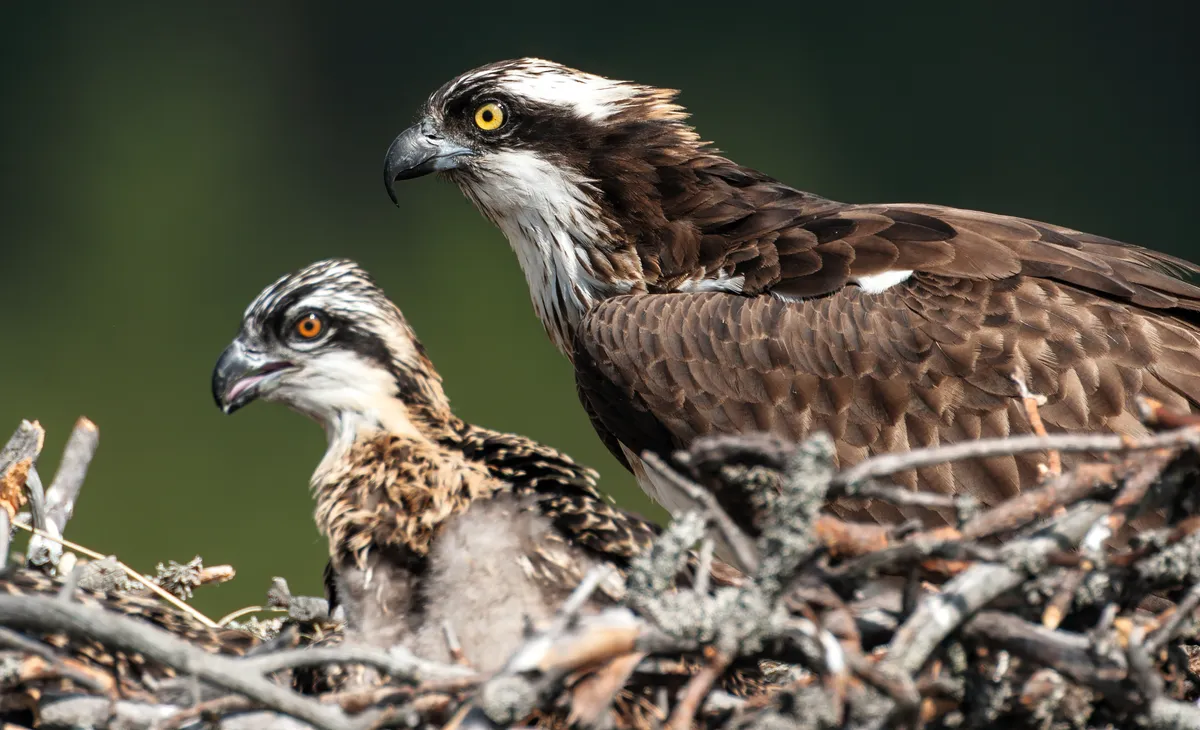
Despite setbacks due to illegal persecution, the ‘fish hawk’ or osprey is one of the great success stories of British conservation. This magnificent raptor has continued its comeback, helped by natural colonisation and the targeted release of birds, most recently at Poole Harbour in Dorset.
By July, many osprey chicks have fledged, but they stay near the nest well into August, honing their flying skills and accepting fish from their parents. This is an exciting time to visit one of the publicly accessible viewing areas. If you can’t travel, watch one of the popular osprey cams online.
Learn more about ospreys:
Meadowsweet (Filipendula ulmaria)
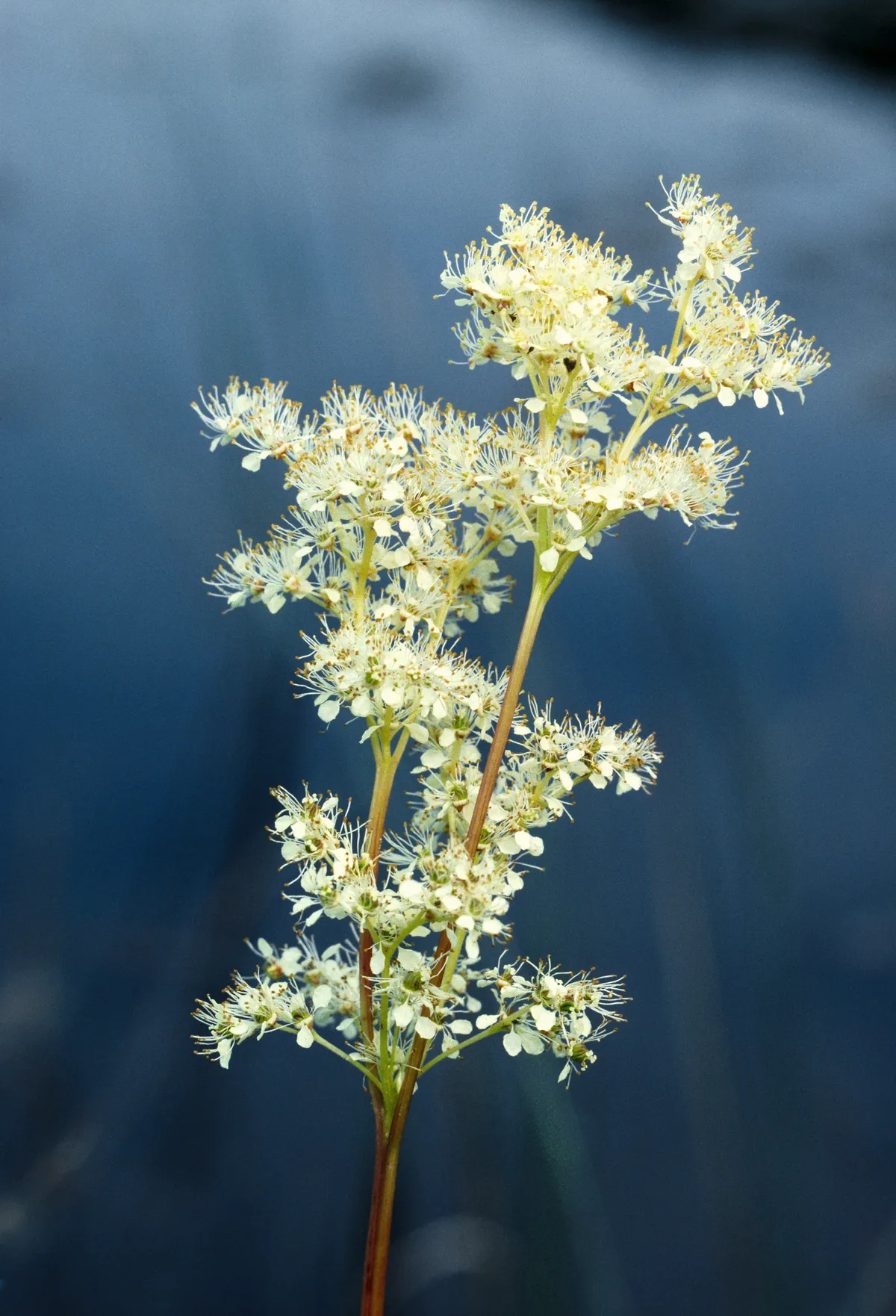
In boggy places such as streamsides, ditches and damp verges, you may catch the mouth-watering aroma of marzipan this month. The scent is from meadowsweet, a classic wildflower of high summer that does its best to remind us of the good times.
It’s a tall plant, with beautiful cream sprays of frothy flowers, and is usually buzzing with a variety of hoverflies and other insects. Intriguingly, not only were the flowers once used to flavour mead, but they were also harvested as a hangover cure.
Flat periwinkle (Littorina obtusata)
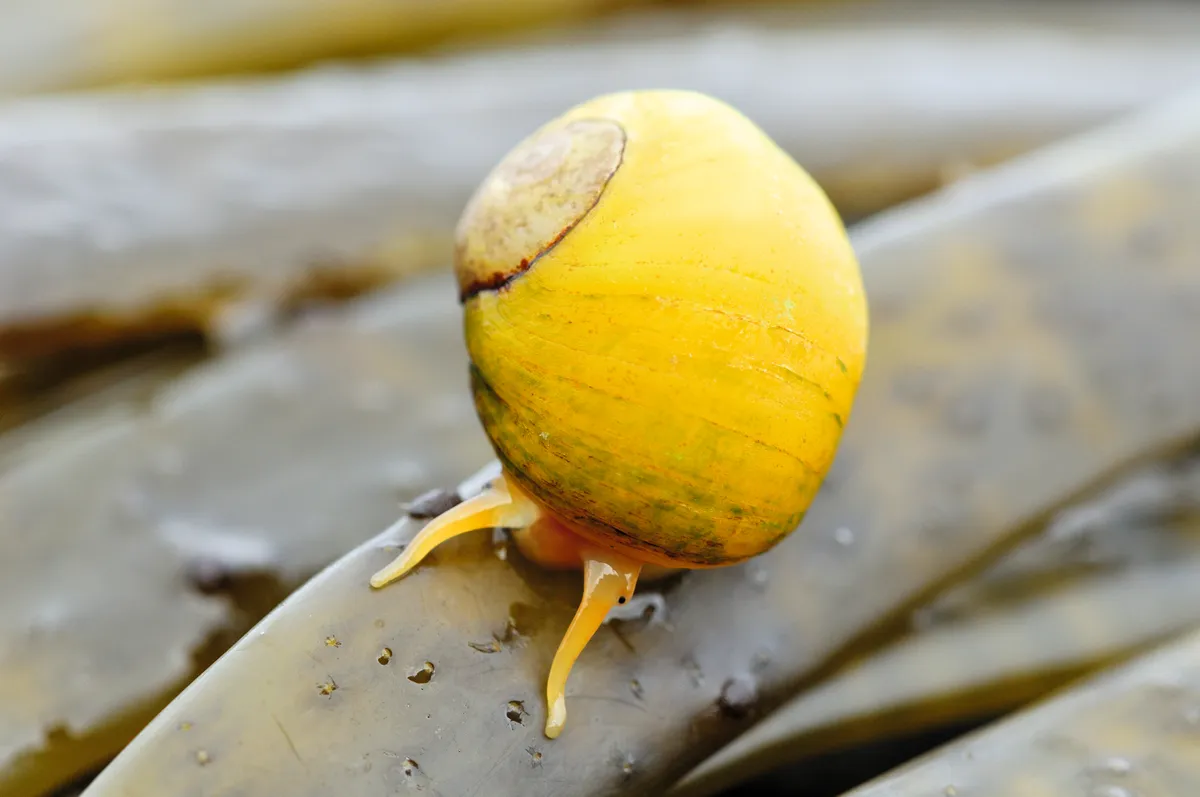
Periwinkles are a group of small and very pretty sea snails, whose shells litter many British and Irish coasts. Some beaches consist almost entirely of these and other shells.
In life, the flat periwinkle is best looked for among the brown seaweed on which it grazes. You might spot it moving slowly with its tentacles out, as it rasps the salty fronds. Its shell is smooth, glossy and (as its name suggests) rather flat. Being bright yellow or orange, it tends to stand out, though there is also a well-camouflaged green form.
Black garden ant (Lasius niger)
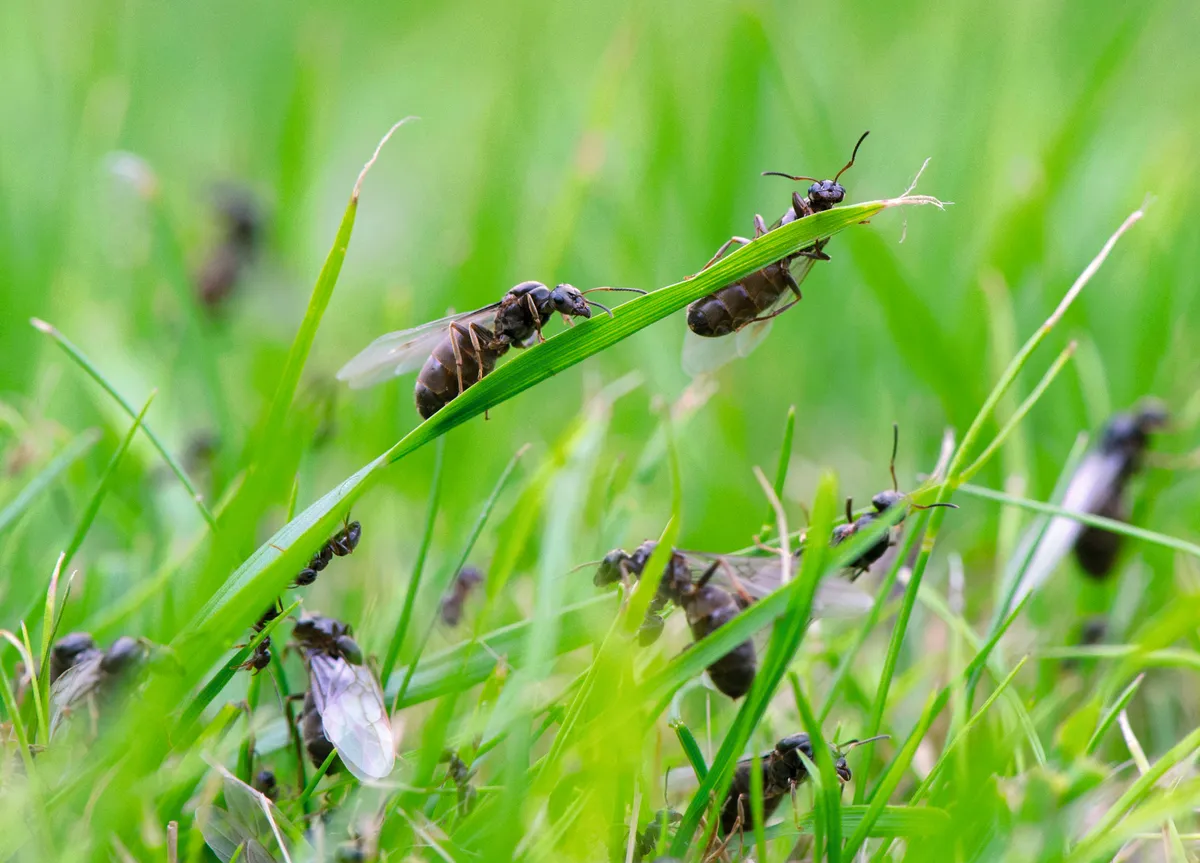
Hot and sticky weather in July and August sees one of the great wildlife spectacles, as millions of black ants pour from their nests and take to the skies. These are sexually mature winged adults, known as alates – mostly males, but with a few larger virgin queens among them.
Often the first sign that such a swarming event is underway is the swooping gulls, starlings, house martins and swifts, taking advantage of the abundant but short-lived feast. These swarms can often occur simultaneously across quite a wide area.
Crab spider (Misumena vatia)
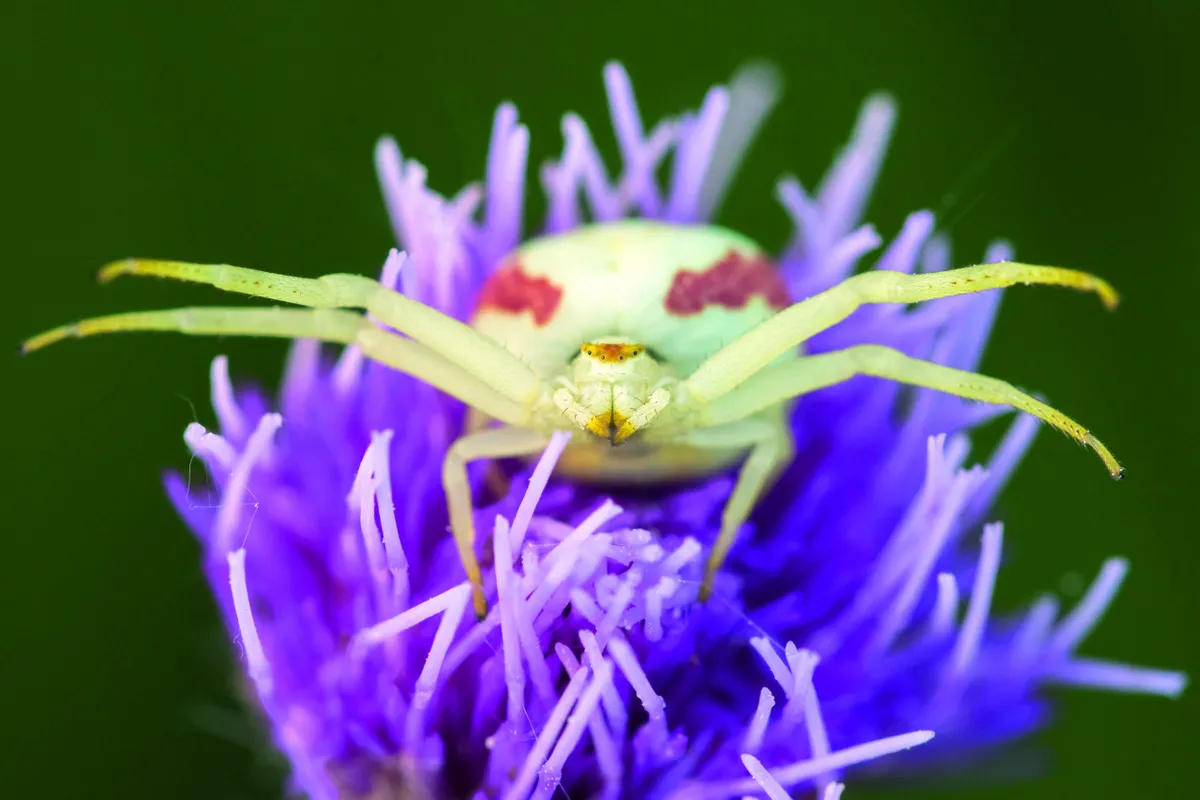
Lurking among the nation’s herbaceous borders and other flowery places are predators with a chameleon-like talent for changing colour. Female crab spiders can often match their background beautifully, but for some reason the smaller males don’t possess this skill.
Of the 30 or so species of crab spider in Britain, the most widespread is Misumena vatia, females of which seek out prominent flowers with wide heads such as ox-eye daisies, hogweed, thistles or knapweed.
When in position, one of these spiders will sit perfectly still with her two front legs held out in front, waiting for an unsuspecting bee, fly or butterfly to visit her chosen bloom. Big mistake. The ambusher strikes, punctures the exoskeleton of her prey, then slurps out the juices.
A spider can detect its victims with virtually every part of its body. “Spiders have an unnerving awareness,” says the naturalist Paul Evans in his book Field Notes from the Edge. “Three pairs of eyes, sensory palps around their mouths, hairs with a sense of touch and proprioception – like hearing and a sense of self, body position, movement and acceleration.” Pretty hair-raising – no wonder spiders are among the most efficient predators on Earth.
Stoat (Mustela erminea)
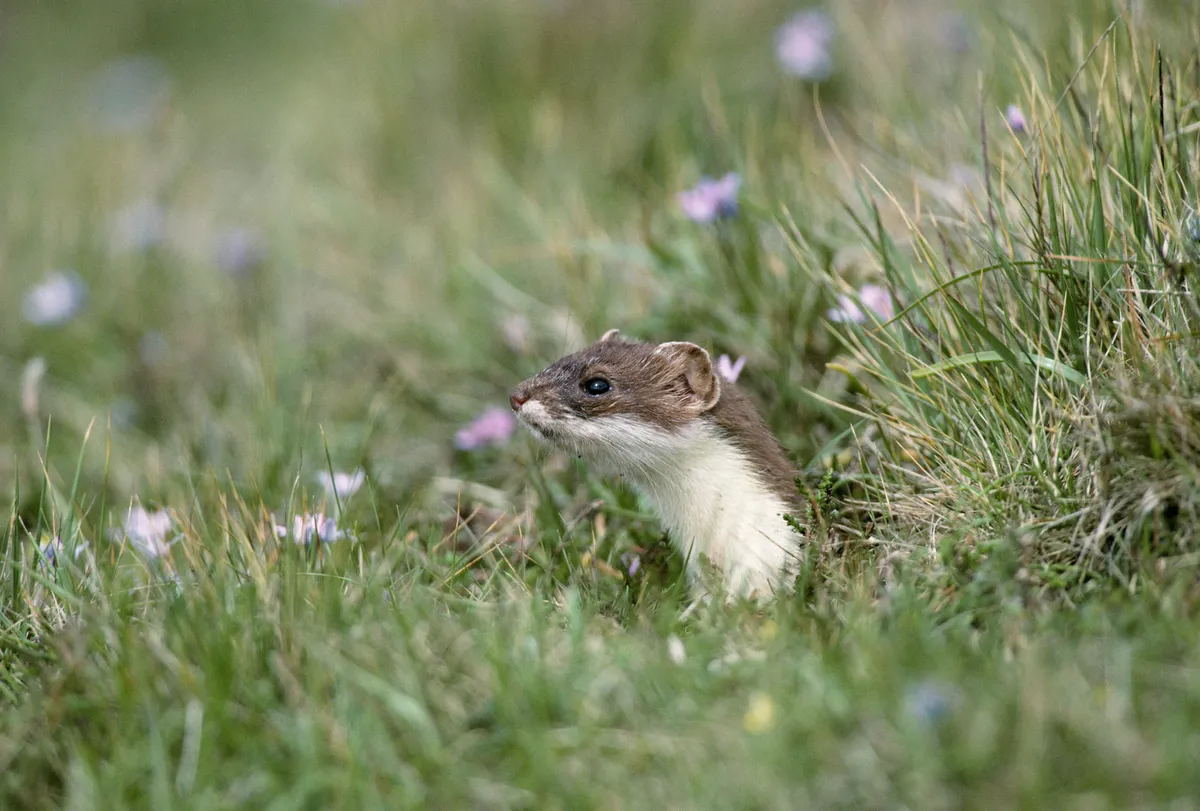
More natural-history TV programmes have been made about lions and tigers than stoats. Yet these russet-backed, cream-bellied mustelids are not rare, merely stealthy. Usually, all you’ll see is a flash of brown as one streaks across a path or country lane.
But if you’re lucky, you might spot a female hunting rabbits or voles in broad daylight for her kits, born in April or May. Near the den, the young can be very playful, chasing one another around dry-stone walls and old rabbit burrows, practising the pounces on which they will depend when they soon disperse.
Find out more about stoats and other UK mustelids:
Peregrine falcon (Falco peregrinus)
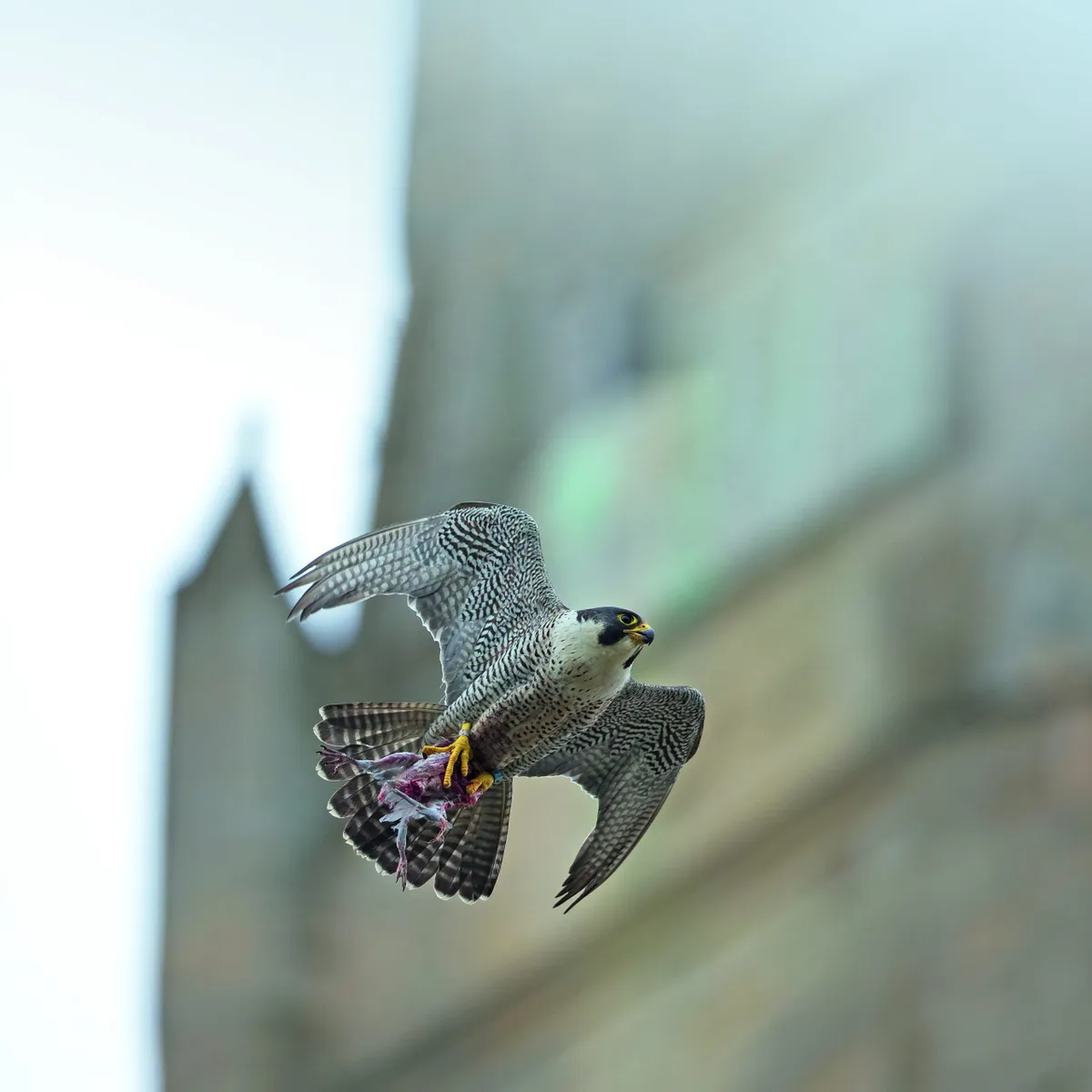
Britain’s peregrine recovery started slowly in the 1980s, then numbers shot up in the 1990s and have continued to rise. Now many areas (except in Scotland and the north) have reached peregrine capacity, and in towns and cities, safe from persecution, there are well over 100 breeding pairs.
Urban peregrine chicks tend to fledge earlier, often before they can fly properly, leading to accidents, as birds become stuck or grounded. In July, you can see the successful juveniles together as they practise flying under the watchful eye of their parents, who still feed them.
Find out more about peregrines and other birds of prey:
Moon jellyfish (Aurelia aurita)
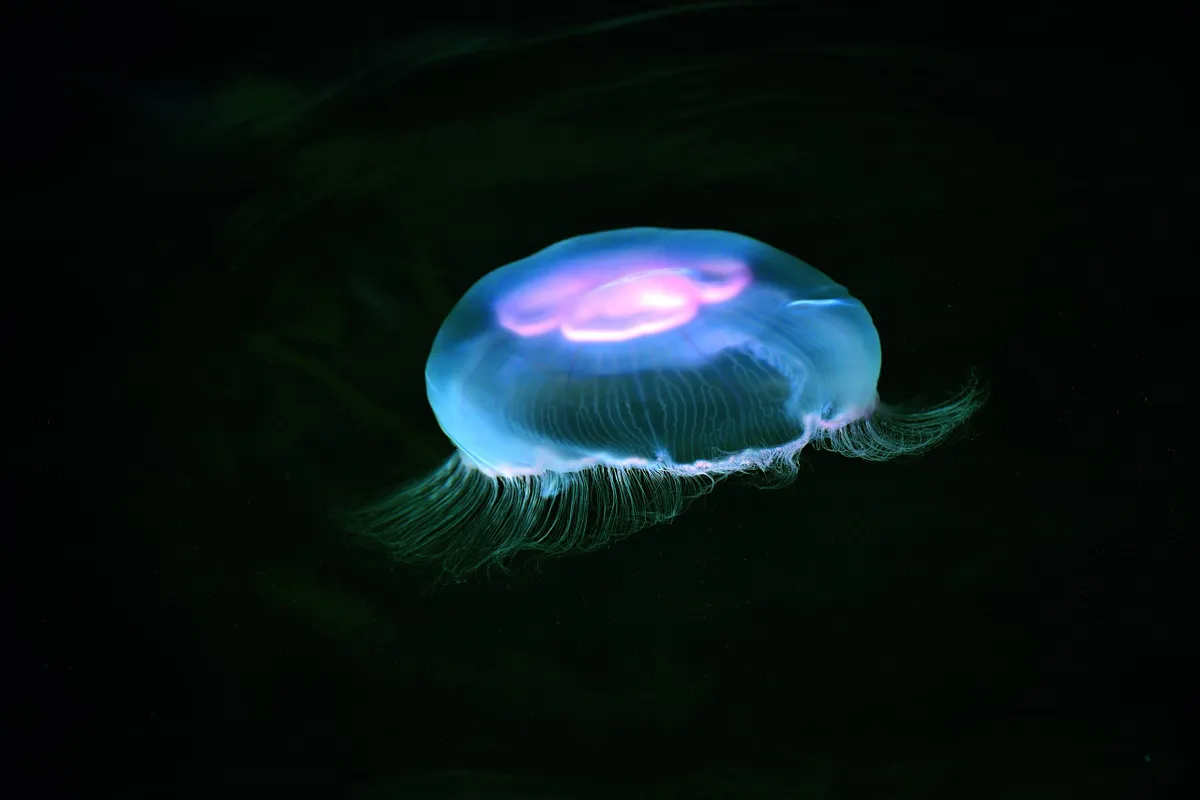
Summer sees jellyfish appear along our coasts, prompting sensationalist headlines in the media. But while several found in UK waters do sting humans, few are dangerous. One of the most abundant harmless species is the moon jelly, which drifts into harbours, sheltered bays and Scottish lochs.
It has a transparent ‘bell’ – the umbrella-shaped part of the animal – and feeds on plankton. Sometimes its numbers build into dense swarms, a beautiful spectacle that is getting more common due, in part, to rising sea temperatures.
Fox moth (Macrothylacia rubi)
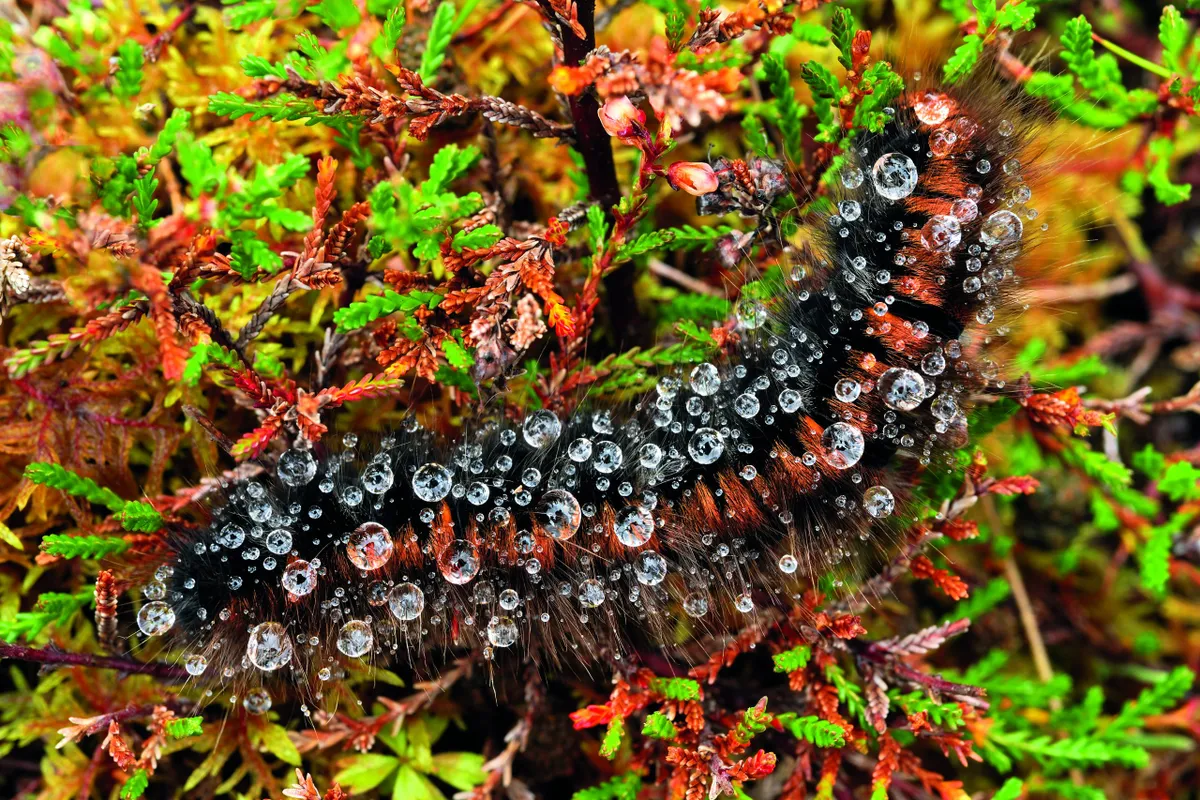
Two stunning identification guides to British caterpillars were published this year, so the munching machines are finally getting more attention from naturalists. After all, these larvae are often far more interesting to look at than the adult moths they turn into.
Many hide among vegetation or high up on trees, but some, like the fox moth caterpillar, trundle about in plain view. Safe in its shaggy coat, this ‘fat cat’ can sunbathe in moorland and heathy or grassy places knowing that hungry birds will leave it be.
Dark green fritillary butterfly (Speyeria aglaja)
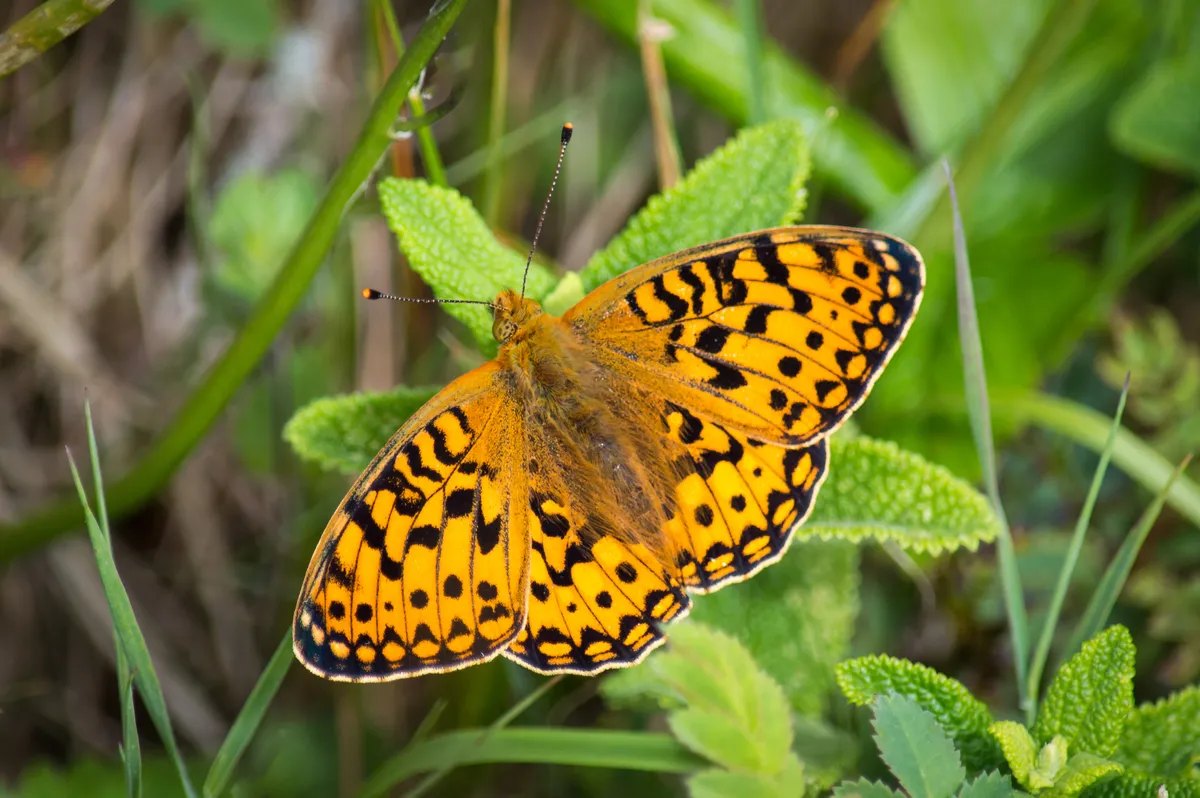
This smart butterfly has tiger- coloured upperwings, but is named for its moss-green underside, which distinguishes it from the similar silver-washed fritillary.
The dark green fritillary has a patchy range across Britain and Ireland – look for this beauty in open, grassy places with plenty of thistles.
Common swift (Apus apus)
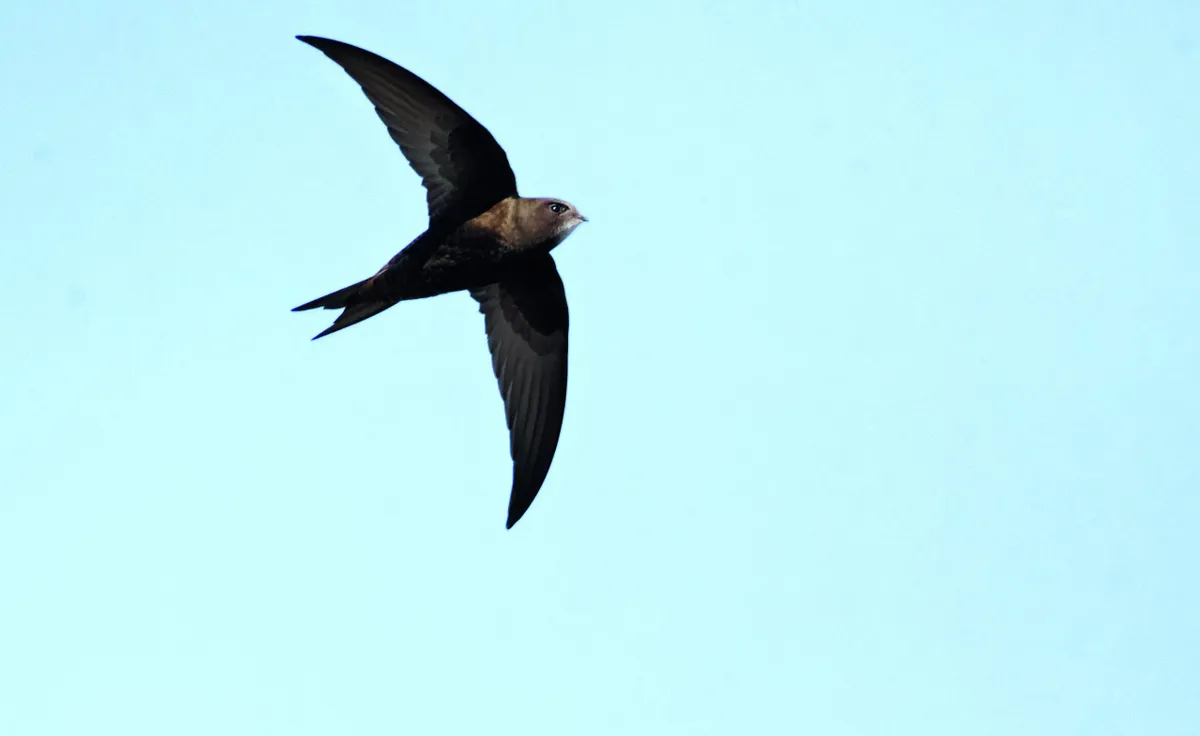
Gilbert White, the parson-naturalist- diarist born 301 years ago this month, was obsessed with swifts. He pondered how they mate, gather nest material, learn to fly, where they go in winter.
Like us today, he also loved the sound of their screaming parties (that’s the technical term), where squadrons of swifts tear helter-skelter around rooftops at dusk. These boisterous social gatherings include breeding pairs and non- breeders, becoming more frequent as summer wears on and the birds’ August migration approaches.
The swift's scientific name, Apus apus, is an example of a tautonym, where the genus and specific name are the same.
Common knapweed (Centaurea nigra)
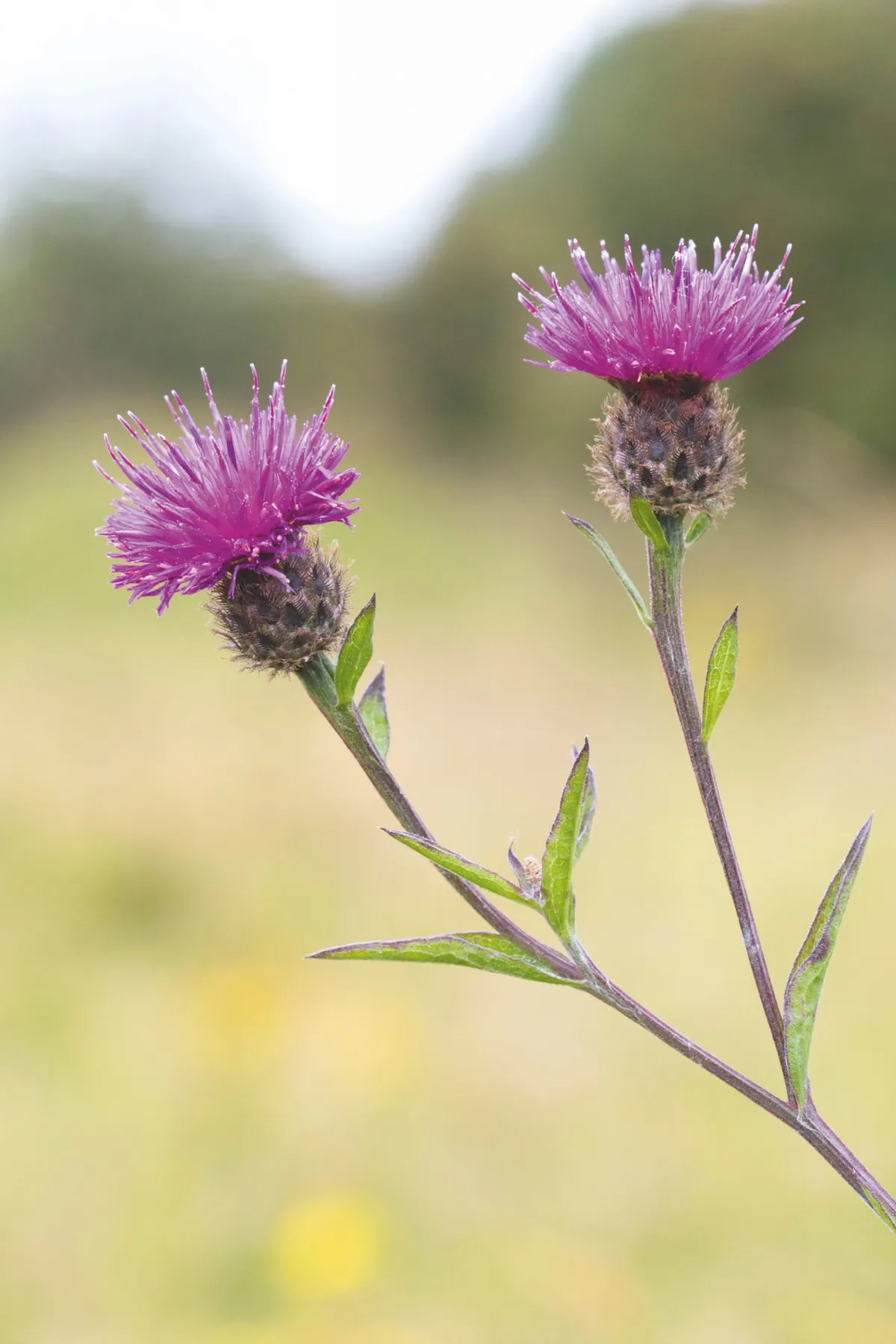
Described as “Lucozade for bees” by Professor Dave Goulson, knapweed produces copious amounts of nectar. Together with white clover and marsh thistle, it was found by a team led by the University of Bristol to be one of the most important British wildflowers for pollinating insects.
Common, or black, knapweed is a widespread grassland plant, and thrives in gardens – you can grow it from seed. After flowering, the seed heads are popular with goldfinches and bullfinches.
Honeycomb worm (Sabellaria alveolata)
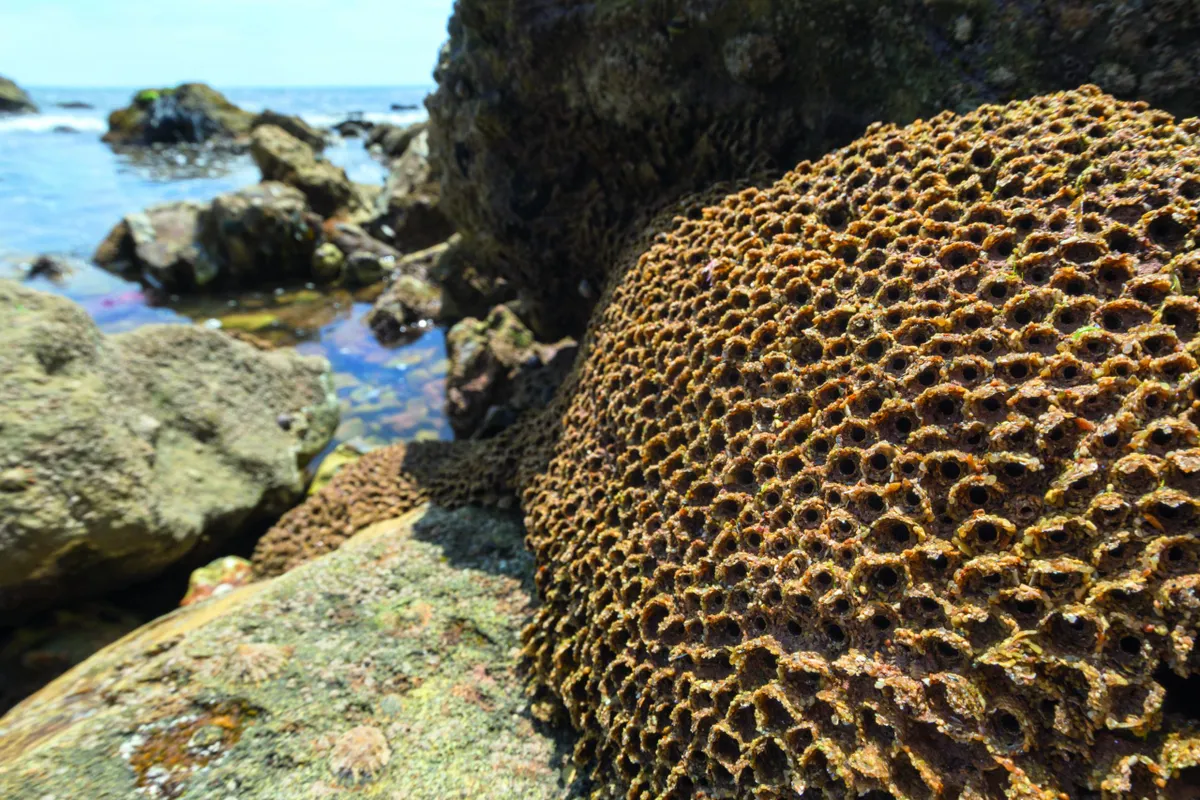
Corals aren’t the only animals able to create reefs – marine worms can, too. Honeycomb worms are named for the substantial shoreline structures they produce, which are actually colonies made up of many individual worm tubes, each built from grains of sand or shell fragments.
The worm cities cover rocks entirely, and clumps may spread out to form reefs. Look for them at low tide on southern and western coasts, in places such as Cornwall, Devon, the Severn Estuary, Cardigan Bay and Morecambe Bay.
Common shelduck (Tadorna tadorna)
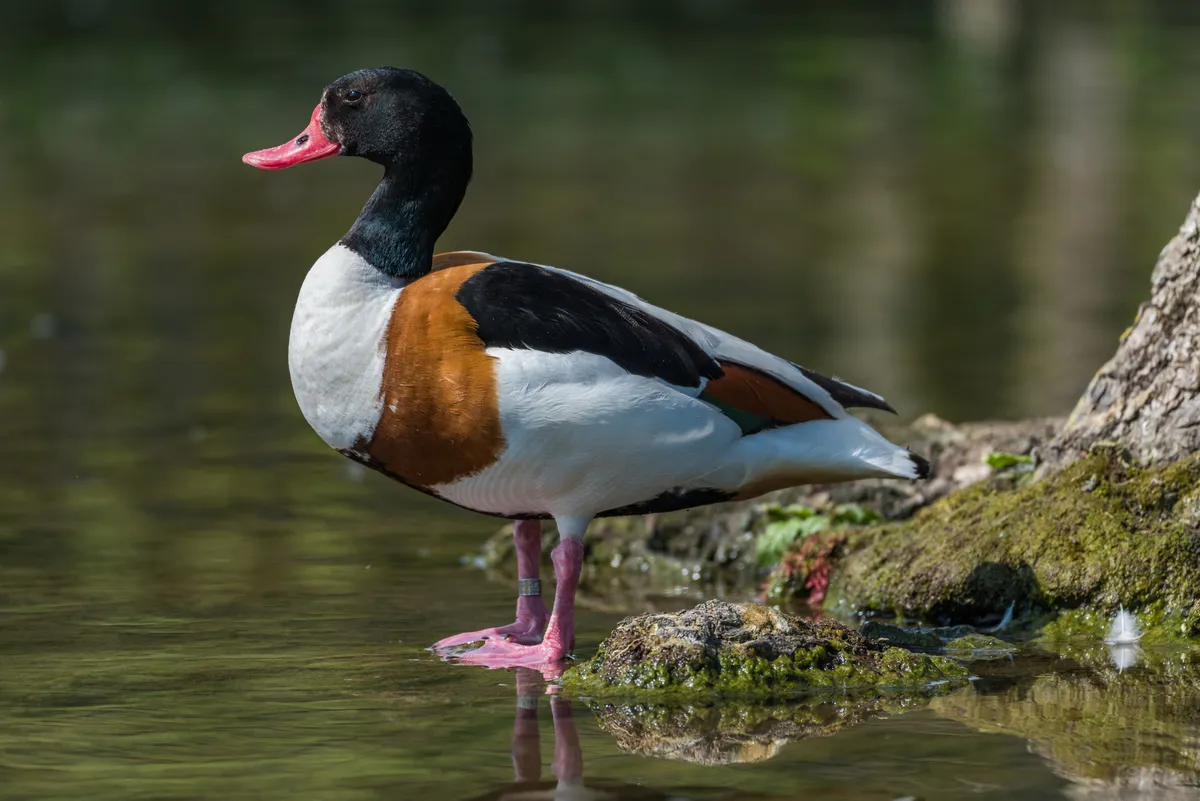
The large shelduck stands out by a mile on our estuaries, salt-marshes and coastal lagoons. It has a unique migration strategy. Towards the end of summer, after raising their young, our entire population decamps to several ancestral moulting grounds.
Most birds move to Germany’s shallow North Sea coast, while others go to the Wash, off East Anglia, or toBridgwater Bay in Somerset. Having moulted into winter plumage, they return and disperse around the country.
Painted lady butterfly (Vanessa cardui)

Summer 2009 saw an estimated 11 million painted lady butterflies surge north to Britain from the Mediterranean. In her bestseller Wilding, Isabella Tree describes how swathes of creeping thistles at her rewilded Knepp estate in Sussex disappeared amid a vast ‘butterfly blizzard’.
Numbers of this large, migratory species usually peak between May and July – keep an eye on thistle, knapweed, ragwort and red valerian – and mass invasions occur roughly once a decade, so one is overdue.
Common bird's-foot trefoil (Lotus corniculatus)
Plantlife once calculated that around a sixth of native British wildflowers are yellow. The colour comes from the pigment lutein, and is why bird’s-foot trefoil, which can turn July meadows and road verges gold, was formerly used to dye fabric.
In common with other members of the pea family, this botanical wonder is able to fix nitrogen in the soil. It’s also popular with many bees and caterpillars, including those of the six-spot burnet moth and common blue butterfly – adults of both species are on the wing this month.
Green-veined white butterfly (Pieris napi)
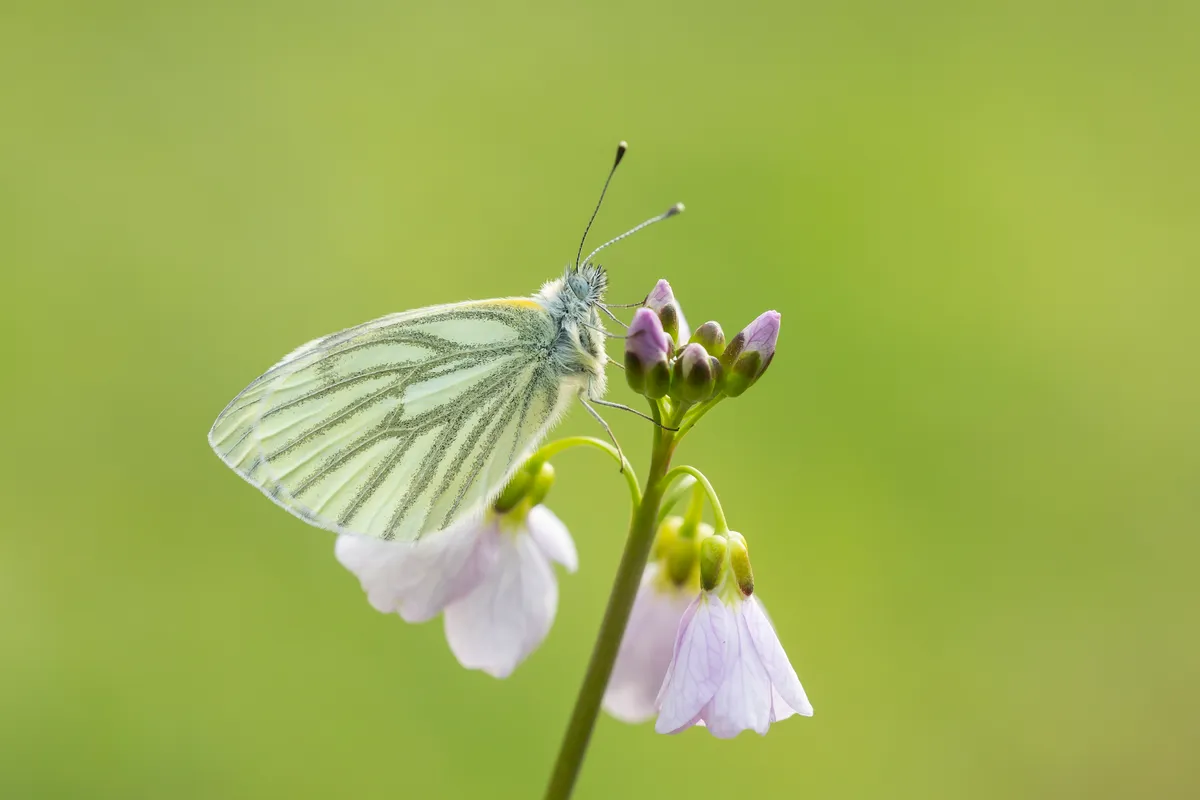
As it flutters over boggy grassland or along a damp woodland ride, this butterfly is easily mistaken for the ‘cabbage whites’ – large and small.
But at rest the differences become clear. Its underwings are smudged with green veins, an illusion produced by a combination of yellow and black scales. This is also one of the few butterflies we can smell. To tempt females to mate, the male releases perfumed scales, which naturalist Peter Marren memorably called “lemon- scented love dust”.
Barred grass snake (Natrix helvetica)
There can be few sights more startling than a grass snake expertly swimming across a pond, lake or canal on a July day, its head raised like a periscope.
We tend to forget that this reptile is totally at home in water in summer, where it hunts small fish, frogs, toads and newts in the shallows and among lush bankside vegetation.
Big females are particularly impressive, often reaching lengths of 1m, or exceptionally up to 1.5m. In 2017, the grass snakes of Britain and western Europe were renamed barred grass snakes to distinguish them from other grass snake species in central and eastern Europe.
Find out more about grass snakes and other UK snakes:
Cinnabar moth (Tyria jacobaeae)
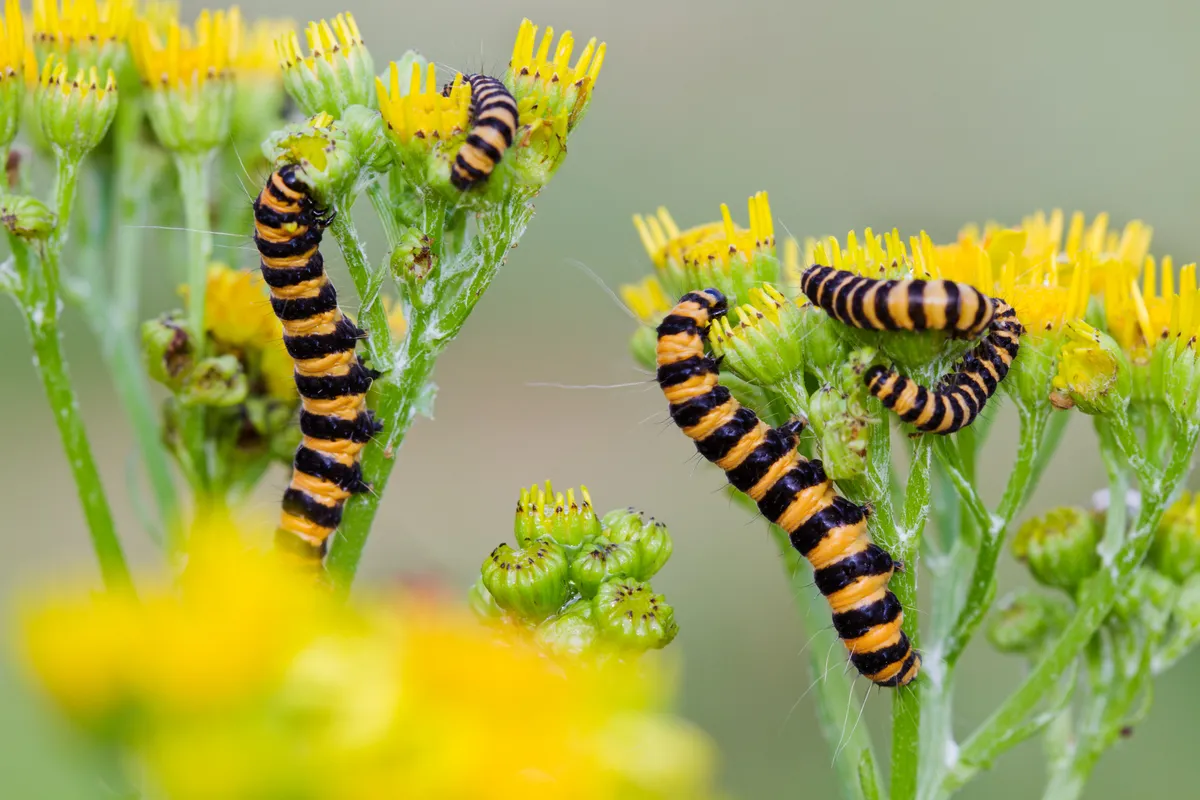
Demonised as a ‘pernicious weed’ dangerous to livestock, common ragwort is often overlooked as a valuable food plant for dozens of insects. Among them are cinnabar moth caterpillars, which sport bold orange and black stripes.
It was long thought that this coloration was purely a warning, to tell would-be predators that the larvae have sequestered toxins from the ragwort and stored them in their skin. But Bristol University research showed that the dazzling colour scheme has a second function: from a distance, it also provides camouflage by helping the caterpillars to merge with their ragwort background.
Main image: Painted lady butterfly. © Getty

